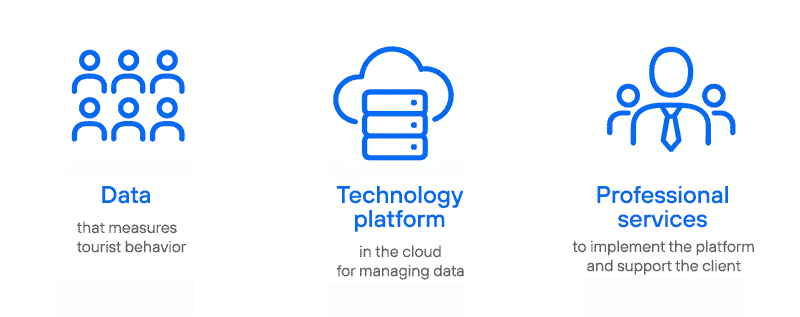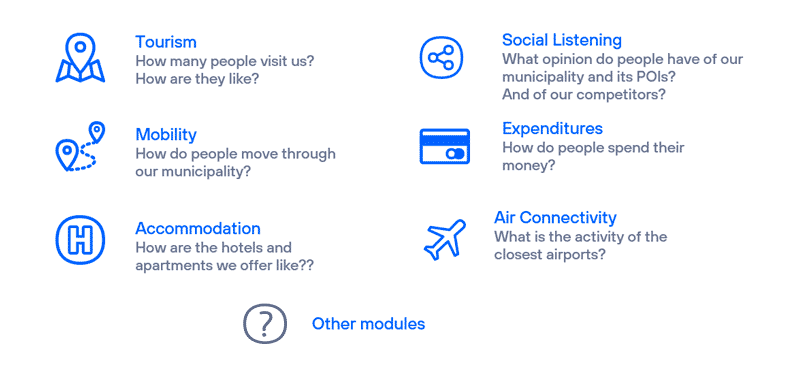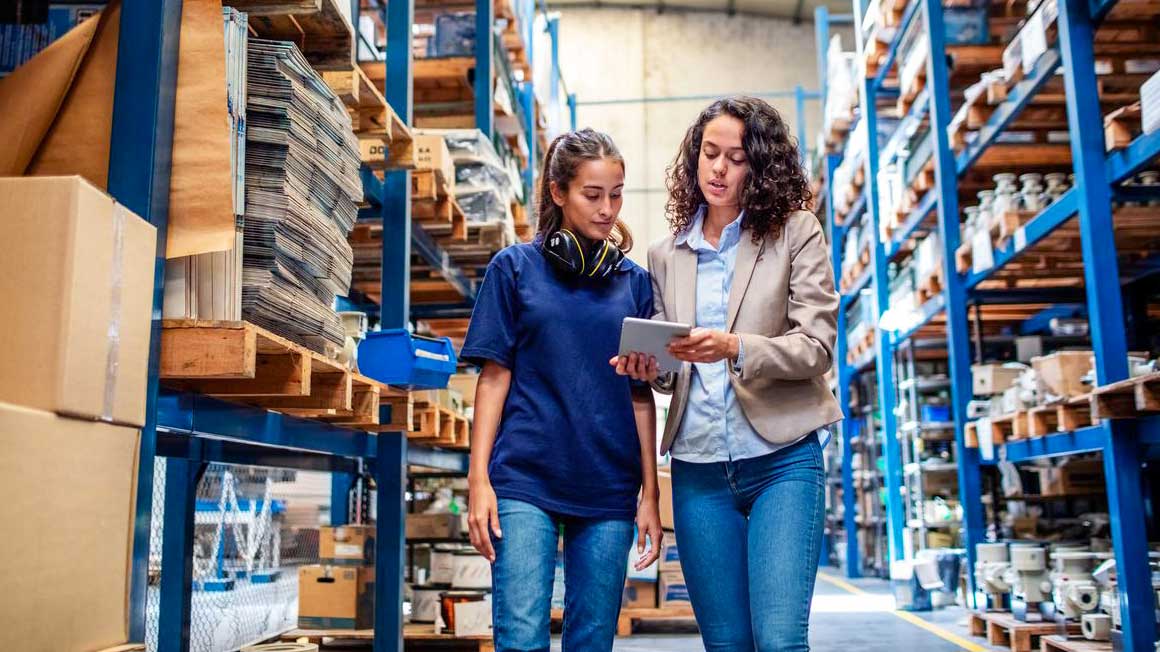Tourism Intelligence System (TIS): an analysis platform to optimize tourism management
While some tourist destinations struggle against overcrowding, others seek to attract visitors. Between these two extremes lies the challenge of managing tourism wisely, maximizing its economic and social benefits while minimizing its negative impacts. The difference between success and failure often comes down to one thing: the ability to make decisions based on data rather than assumptions.
Telefónica Tech has developed the Tourism Intelligence System (TIS) a platform that provides municipalities with critical data to optimize resources, attract the right visitors and create experiences that benefit tourists and residents.
The power of data makes the difference between counting tourists and creating value.
What is TIS: smart tourism in action
TIS, Tourism Intelligence System, is a solution based on Telefónica Tech's Smart Steps platform that processes and analyzes large volumes of data for tourism management, transforming massive data into useful knowledge.
The ITS platform generates metrics and indicators on key aspects of tourism activity using machine learning algorithms, statistical analysis and multiple sources of information to provide accurate answers to relevant questions such as:
- What are the behavioral patterns of visitors?
- Which tourism segments generate the most value for the destination?
- How to redistribute flows to avoid congestion?
- What is the impact of events and campaigns?
The system allows correlating multiple variables and segmenting demographic and behavioral data to transform complex data into effective strategies. Destinations can focus their promotional investments more efficiently, for example, by identifying the segments that generate the greatest economic impact with the least pressure on resources.
The platform includes monitoring to proactively manage high-traffic situations. This allows for everything from reinforcing services in specific areas to implementing dynamic recommendations to redirect visitors to less congested areas.
The system evaluates event impact metrics and integrates with APIs from external systems (traffic, weather, etc.) to correlate this data with tourism patterns and facilitate evidence-based decisions.
Components of the Tourism Intelligence System (TIS)
In order to understand how ITS can improve a municipality's tourism management, it is essential to know its three main components:

Data
ITS processes and organizes diverse heterogeneous data sources. The system integrates and analyzes multiple data sources:
- Visitor movements (travel patterns, length of stay, places of interest).
- Demographic and socioeconomic profiles of tourists.
- Consumption and expenditure data.
- Online search trends related to the destination.
- Ratings and opinions on digital platforms.
- Information on events, weather and transportation.
This information, previously dispersed or inaccessible, is processed and presented in configurable dashboards with filters and adjustable parameters. This allows the visualization of time series, heat maps, flow charts and other visual elements that facilitate the identification of statistically relevant patterns.
Technology platform
ITS technology platform operates in the cloud, eliminating the need for complex and costly local infrastructures. Its architecture is designed to:
- Process large volumes of data in real time.
- Apply maximum security and compliance (GDPR and local regulations).
- Scale according to the needs of each municipality.
- Integrate with existing systems through public APIs.
- Provide personalized access to different user profiles.
ITS technology combines the best of Big Aata, AI and user experience. It thus makes complex information accessible to non-technical users.
Professional services
We know that technology does not transform destinations. That is why ITS includes an essential human component: a team of experts in digital tourism who:
- Supports the administrations in the implementation process.
- Identifies specific opportunities for each destination.
- Empowers local teams to maximize the value of the platform.
- Facilitates the development of adapted use cases.
- Helps interpret data and transform it into effective strategies.
This support ensures that the technological investment translates into tangible results, helping administrations to overcome the barrier between data and action.
Advanced data analysis makes the invisible visible and the inaccessible actionable.
Adaptability to each municipality and particular situation
There are no identical tourist destinations, and ITS recognizes this reality. The platform has a modular architecture that adapts to the needs of each territory, regardless of its size, resources or digital maturity.
 ITS Modular System.
ITS Modular System.
- For small and medium-sized municipalities, ITS offers a quick and low-cost implementation version, with predefined reports that allow immediate results without large initial investments in infrastructure or specialized personnel.
- Larger tourist destinations can access a more robust version, capable of integrating multiple data sources, developing customized dashboards and managing large volumes of information. This configuration responds to the needs of cities that require advanced solutions to manage their tourism ecosystem.
- At its most advanced level, ITS facilitates the creation of tourism data spaces, integrating with in-house and third-party ecosystems. This allows destinations to adapt to any existing architecture and meet specific regulatory requirements, enabling full integration with existing information systems.
This flexibility allows any destination, from small rural municipalities to large tourist capitals, to benefit from digital transformation without facing technological or budgetary obstacles.
Key benefits of ITS
The implementation of ITS offers specific benefits that affect all stakeholders in the local tourism ecosystem.
- ITS modifies decision-making for public administrations by replacing assumptions with real data. Municipalities can optimize their investments in promotion and infrastructure, measure the return on their initiatives, anticipate emerging trends and allocate their resources more efficiently.
■ This analytical capability facilitates better coordination between municipal departments, aligning objectives and strategies.
- The local population experiences a reduction in the negative externalities of poorly managed tourism. ITS promotes a balance between the needs of residents and visitors, helping to preserve cultural identity and local heritage.
■ It also contributes to creating sustainable economic opportunities and improving public services, involving the community in defining the desired tourism model.
- The impact for visitors consists of experiences with less congestion and a tourism offer better aligned with their interests. They receive contextualized information that enriches their visit, discover lesser known but relevant attractions and enjoy public services tailored to their needs.
■ All contribute to increasing visitor satisfaction and potentially increasing the length of visit and spending.
Tourism balance allows visitors and residents to share spaces and benefits.
ITS innovations and future
ITS is not a static platform, but an ecosystem that is regularly updated to incorporate new capabilities that respond to the challenges of the tourism sector. Our innovation roadmap focuses on three key areas:
Expansion of data sources
- Integration with air and ground transportation operators to analyze global traveler flows.
- Incorporation of data from collaborative economy platforms (accommodations, experiences, etc.).
- Connection with payment systems for advanced analysis of tourism spending.
- Monitoring of the destination's digital footprint (social networks, searches, etc.)
Technological advances
- Ability to process large volumes of data from multiple sources.
- Generation of complex and analytically enriched dashboards.
- Predictive algorithms to anticipate trends and behaviors.
- Conversational interfaces facilitate natural language queries.
- Immersive technologies for advanced data visualization.
- Generative AI models to simulate future scenarios.
New use cases
- Ability to process large volumes of data from multiple sources.
- Generation of complex and analytically enriched dashboards.
- Predictive algorithms to anticipate trends and behaviors.
- Conversational interfaces facilitate natural language queries.
- Immersive technologies for advanced data visualization.
We at Telefónica Tech are committed to co-creation. We collaborate with public administrations, universities, and private sector actors to ensure that ITS evolves in the direction required by the territories to develop sustainable, inclusive, and viable tourism.
Conclusion
Our Integrated Tourism System is an analysis tool that seeks to balance the economic development of tourism with social and environmental sustainability through the intensive use of data.
Sustainable destinations are not measured by the number of visitors, but by the value they generate and preserve.
ITS provides structured information for decision making in a world where destinations compete globally for the attention of discerning travelers and local communities demand sustainable tourism models.
Destinations that achieve a balance between attracting visitors, generating economic value and preserving local resources will have a competitive advantage. ITS is a tool that facilitates this balance through data analysis.
 Hybrid Cloud
Hybrid Cloud Cyber Security & NaaS
Cyber Security & NaaS AI & Data
AI & Data IoT & Connectivity
IoT & Connectivity Business Applications
Business Applications Intelligent Workplace
Intelligent Workplace Consulting & Professional Services
Consulting & Professional Services Small Medium Enterprise
Small Medium Enterprise Health and Social Care
Health and Social Care Industry
Industry Retail
Retail Tourism and Leisure
Tourism and Leisure Transport & Logistics
Transport & Logistics Energy & Utilities
Energy & Utilities Banking and Finance
Banking and Finance Sports
Sports Smart Cities
Smart Cities

.jpg)



